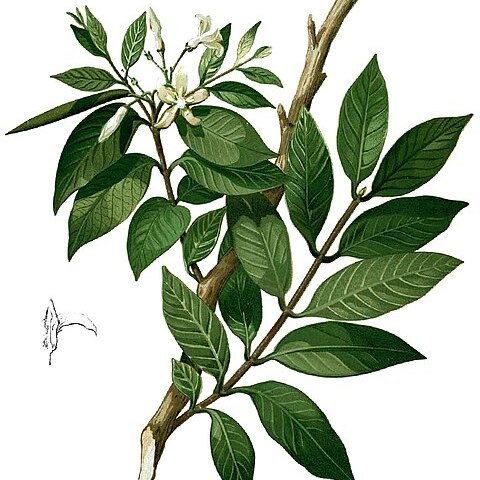Shrub or tree to 35 m high, deciduous. Leaves with dense indumentum; petiole 4–8 mm long; lamina ovate, elliptic, obovate or oblong-ovate, to 15 cm long, to 6.5 cm wide, rounded to cuneate at base, acute to shortly acuminate at apex, discolorous, dark green above, pale green below; secondary veins 9 or 10 each side of midrib, obscure above. Flowers fragrant. Corolla subrotate, white to cream-yellow; tube 5–6.5 mm long; lobes narrowly obovate to obovate, 10–20 mm long, internally papillose. Corona of 10 lobes, c. as long as stamens. Fruit 15–30 cm long, lenticellate. Seeds very narrowly fusiform, 9–10 mm long; coma 30–35 mm long.
A tree. It grows 35 m tall. The trunk can be 60 cm across. The bark is yellowish-brown. Young branches have yellow hairs. The leaves are 5-10 cm long by 3-6 cm wide. The fruit are follicles 15-30 cm long by 1-2 cm wide. The seeds are narrow and 3.5 cm long.


